John Hurrell – 29 July, 2011
With his exhibition title Moore is referring to a large park adjacent to a famous ruined Tudor palace in Surrey where in a star-shaped chamber it seems Marlowe was once interrogated. It is also slyly read as ‘none such' - referring to something 'parked' that is unique and unduplicatable; alluding perhaps to itself as constructed artefact, a distinctly unrepeatable artwork.
In many ways this is a typical Tahi Moore exhibition with its Gambia Gastle avant-gardism now transferred to fellow GC member Sarah Hopkinson’s dealer gallery. Building his own myth he has peppered throughout references to earlier Tahi Moore shows - abandoned faded jeans (in Various Failures, 2008), plywood panels (German Sands /Our faces, 2007), long stacks of wood (Roman Mitch’s curated Caraway Downs at ARTSPACE, 2011), taped up photocopies (War against the Self, 2009) - and of course his trademark interest in film, with quotations in his dvds and lightboxes (using sources such as Godard’s Passion).
Much of this mix of video, painting, sculpture and photography demonstrates Moore’s sense of mischief: playing with intricate ambiguities of language and deliberate confusion of names (eg Daniel Malone; Beckett’s Malone; Christopher Marlowe the Elizabethan poet, playwright and spy; Philip Marlowe the Raymond Chandler detective; ‘Marlowe’ - a word he discovered tattooed on actress Jane Birkin’s second daughter’s arm) mixing up disparate streams of information so they get woven into a sort of eccentrically moulded stodge of grey informational porridge. The jumbled blending seems to be the point, a love of coincidence leading to incongruous melding, taking (as one example) an Easton Ellis novel and then filming [and treating] an Elvis Costello record that refers to it as if it were a highly elastic clue to the limits of human knowledge (and their moral implications) as described in Marlowe’s Doctor Faustus.
With his exhibition title Moore is referring to a large park adjacent to a famous ruined Tudor palace in Surrey where in a star-shaped chamber it seems Marlowe was once interrogated. It is also slyly read as ‘none such’ - referring to something ‘parked’ that is unique and unduplicatable; alluding perhaps to itself as constructed artefact, a distinctly unrepeatable artwork. In his use of oddly linked language and witty reflexive heading Moore reveals himself to be an inventive variety of formalist preoccupied with the shape of thought as words strain to contain it, and conniving to successfully attach that semantic morphology to other shapes.
There is also a sense in his bizarre connections that Moore is a sort of nominalist who believes that the application of words to things is entirely arbitrary and particular to each example only. Such a mentality denys the real being of universals on the basis that the use of a general word (say, the generic group of people in literature called ‘Marlowe’) does not imply the existence of a general group named by it. In other words, he shows us all these links but he also seems to be disconnecting or thwarting them, undermining them with an open sense of absurdity.
Even if you see his obsessive and playful tinkering as ultimately only leading to an end result of no real interest, you can still generously ignore it and treat Moore’s show as a quirky puzzle through which you attempt (using Jon Bywater’s handy accompanying essay) to join up the seemingly disparate pieces. That is, if motivated to try. But not many would.
John Hurrell
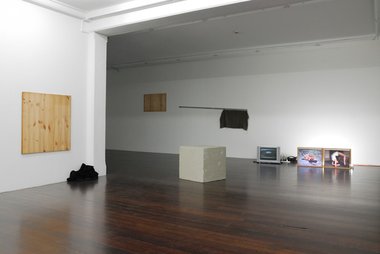
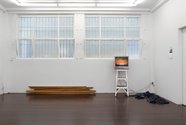


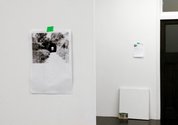
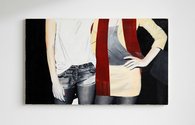

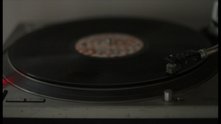
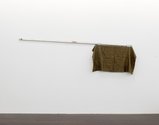
 Advertising in this column
Advertising in this column Two Rooms presents a program of residencies and projects
Two Rooms presents a program of residencies and projects



This Discussion has 0 comments.
Comment
Participate
Register to Participate.
Sign in
Sign in to an existing account.